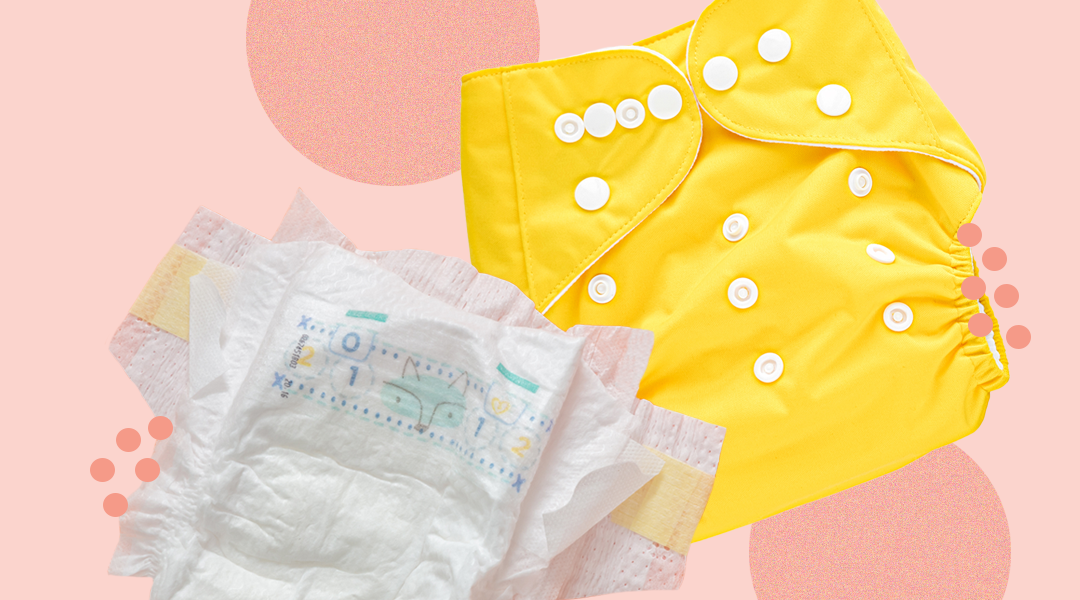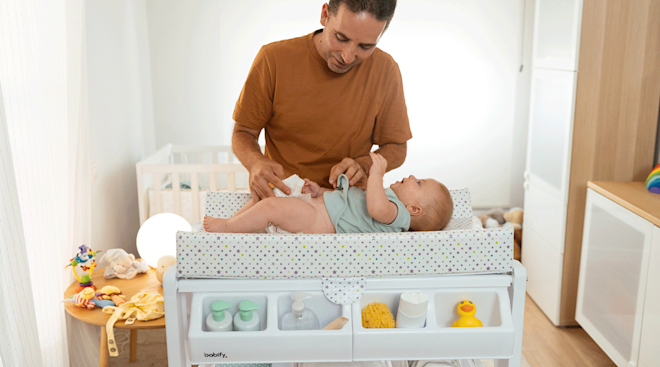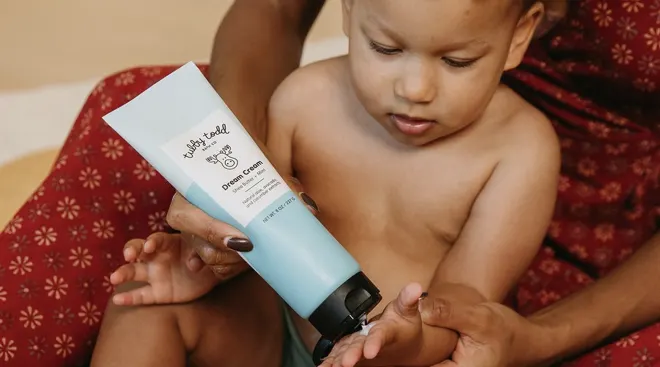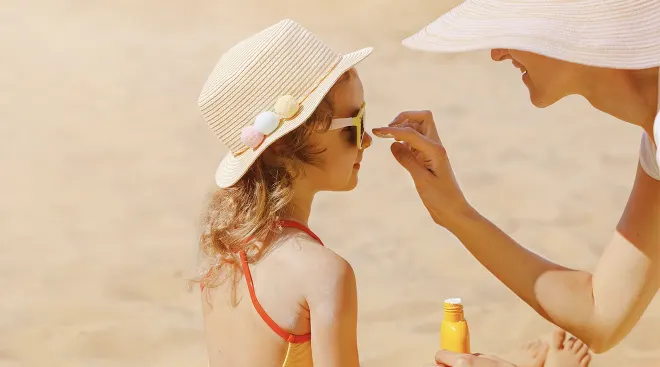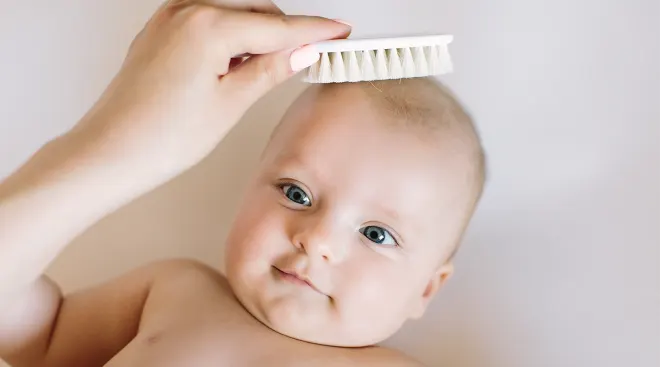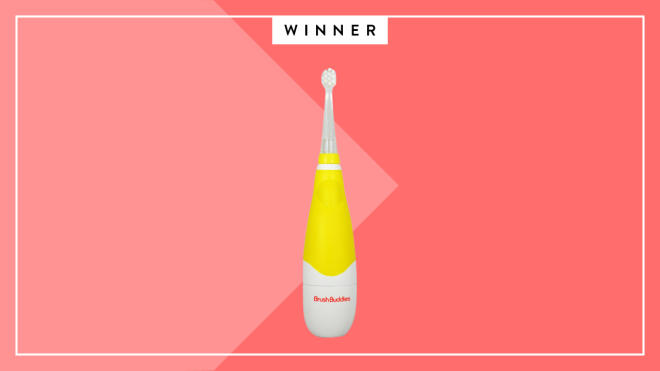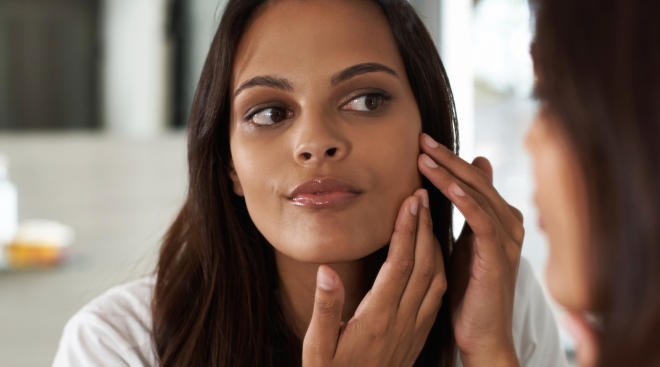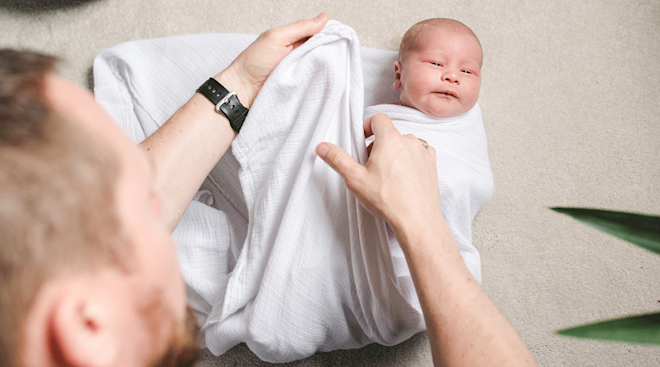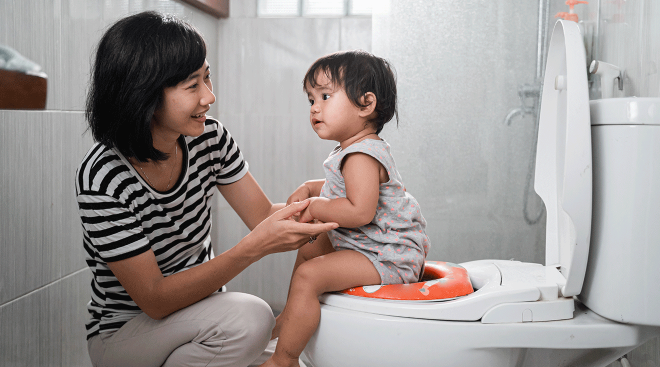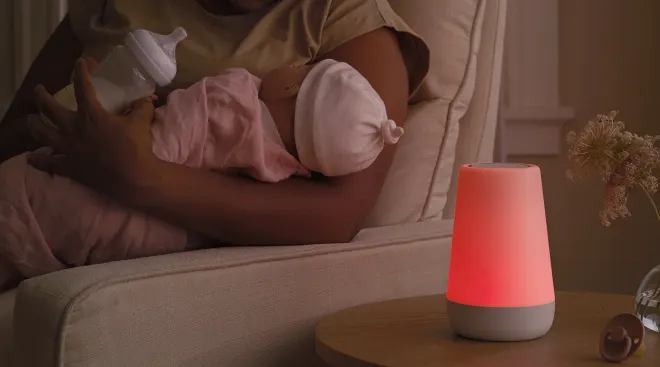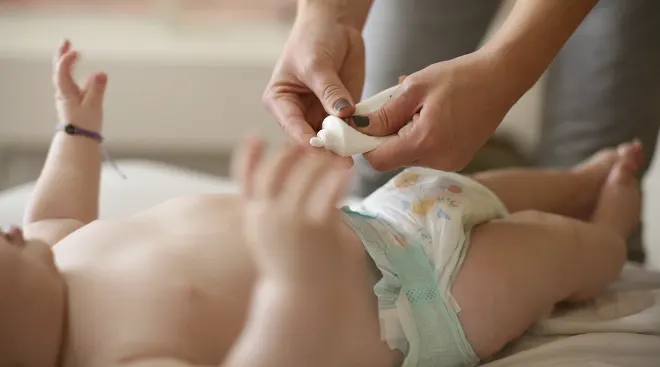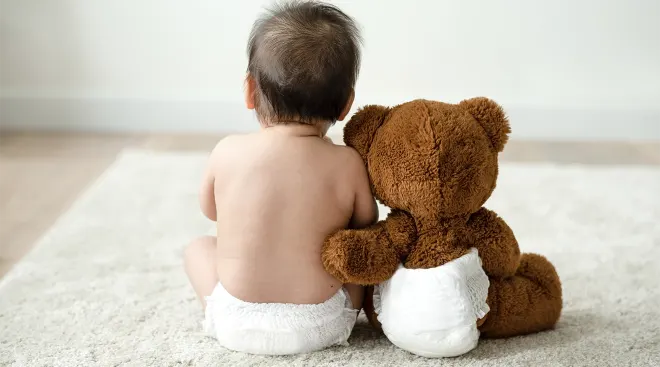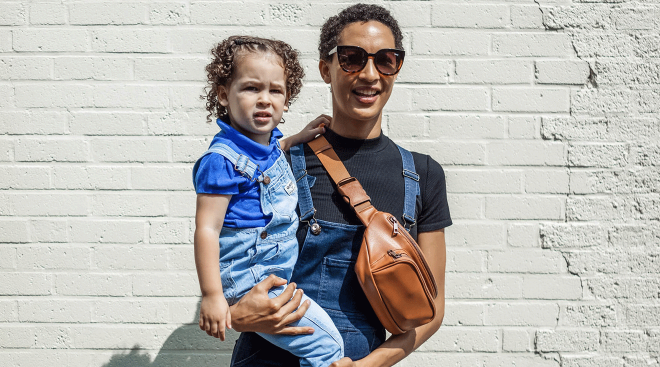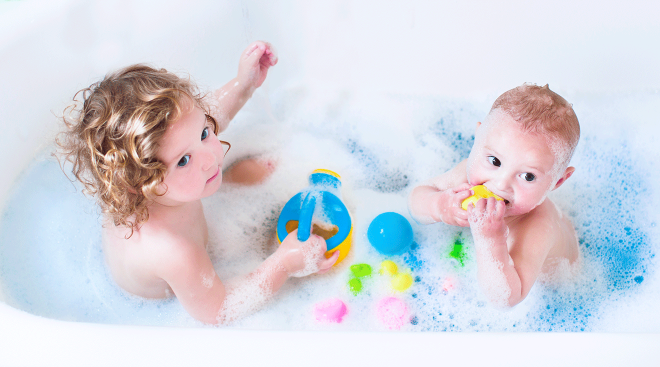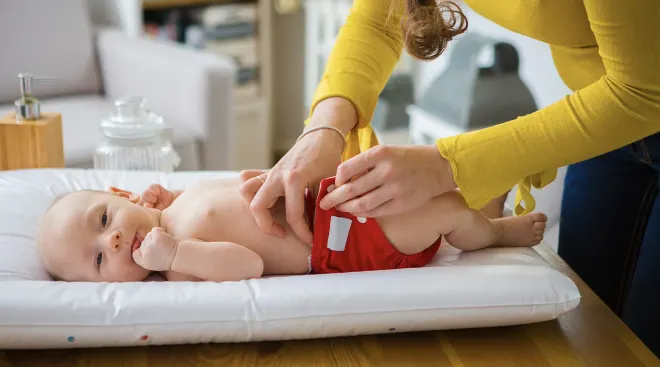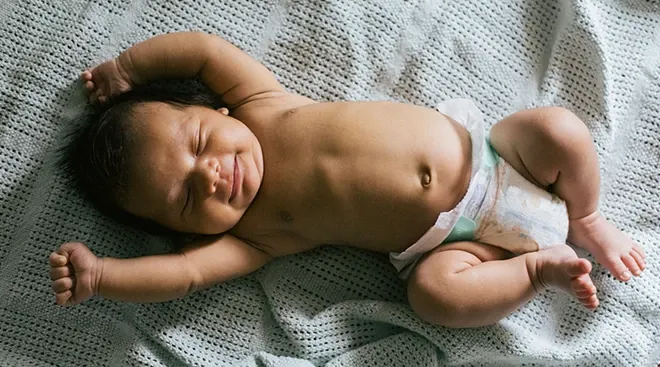Bummed Out! How to Treat and Prevent Diaper Rash
Does baby have tiny red bumps on their backside? They may be experiencing a bout of diaper rash. Diaper rashes are so common, almost all babies will get one at some point. But while it’s nothing to be alarmed about, a baby butt rash is something you need to be proactive about addressing. After all, you hate seeing baby uncomfortable in any way, and diaper rashes can be a real pain in the, well, you know where. So how can you offer your little one some much-needed relief? Read on to learn everything from the best diaper rash treatments to ways to prevent it in the first place.
Just like its name implies, diaper rash is a rash that appears where a diaper touches their skin—namely their butt and genital region. “Diaper rash is identified by red, irritated skin around the diaper area,” says Jody Levine, MD, a New York City-based dermatologist and pediatrician. Baby is likely to cry during a diaper change due to heightened sensitivity.
All those wet and dirty diapers that touch baby’s skin can be irritating, which is why diaper rash mostly happens to infants and toddlers under 2 years old who haven’t been potty trained yet. Though diaper rash can pop up at any time, the odds are pretty good that you’ll be treating diaper rash (or multiple cases of it) when baby is between 9 and 12 months. “This is around the age when babies are sitting for long periods of time and they also begin to eat solids, so the composition of their poop is more acidic,” Levine says.
There’s a reason diaper rash is often called baby butt rash, as it covers baby’s backside, but it can also affect the genitals and thighs—basically anywhere diapers touch the skin. This kind of rash typically results in red, raw, tender skin. You may notice a few spots, or the rash could cover the entire diaper area, and it’s sometimes warm to the touch.
If this is the first time you’re seeing a rash on baby, contact your pediatrician before you assume it’s diaper rash and start trying out treatments—that way, the doctor can accurately diagnose your child’s condition and get it cleared up stat.
The most obvious cause of diaper rash is exposure to urine and poop—and the appearance of diaper rash doesn’t necessarily mean you’re not changing baby’s diaper often enough. “Anytime moisture sits on the skin for a period of time, it can cause the skin to get irritated,” says Laurie Belosa, MD, a pediatrician at Summit Health in Westfield, New Jersey. “Even if you’re changing diapers religiously, whether they’re disposable diapers or cloth diapers, they can still cause irritation because it’s a sensitive area, which can lead to a diaper rash.”
Not using enough protective ointment to create a good barrier between baby’s skin and the diaper is another common cause of diaper rash, but allergies, illnesses, foods and medications can all be culprits, too. Here are a few more triggers that could be causes of diaper rash:
• Diaper rash from diarrhea. “A baby of any age who has the runs will be more likely to have a diaper rash,” Levine says. Old wives’ tales also link diaper rash and teething, since it’s been said that teething causes diarrhea in babies—but there’s no science to support this. “However, as a mom of five, I can say from experience that I’ve seen my babies have increased watery stools during teething that, like all watery stools, have the potential to lead to a diaper rash,” Levine says.
• Diaper rash from sensitivities. Baby’s soft skin can be extra-sensitive to certain ingredients found in soaps, lotions and wipes, which could cause contact dermatitis and rashes, Levine says. She recommends steering clear of products with whitening agents and dyes.
• Diaper rash from friction. When baby starts crawling, you may notice diaper rash developing more often. It makes sense, since once baby’s on the move, those wet diapers are probably rubbing against their skin more, leading to chafing and rashes.
• Diaper rash from foods. “Acidic foods, like certain fruits and fruit juices, can trigger diaper rash because they can change the pH level of the urine,” Levine says.
• Diaper rash from antibiotics. If baby’s been ill and your doctor put them on a dose of antibiotics, there’s a good chance you can expect a diaper rash shortly down the road. “Antibiotics can kill off both bad and good bacteria to allow yeast to flourish, which contributes to diaper rash,” Levine says.
There are actually different types of diaper rash with different causes. “A regular diaper rash causes baby’s skin to become very irritated and chafed, and that’s just from irritation,” Belosa says. But other types of diaper rash can result from bacteria or fungal growth. It can be nerve-wracking trying to figure out what type of rash baby has. Keep in mind that your run-of-the-mill baby diaper rash will:
- Look mildly red
- Typically affect only the area touched by the diaper rather than the folds of baby’s skin
- Usually clear up in a day or two if you slather on plenty of diaper cream, give baby’s bottom time to air out and change wet or soiled diapers right away
However, if baby’s rash doesn’t clear up in about two days, it could mean they’ve developed one of these other types of baby diaper rash:
Bacterial diaper rash
Known as impetigo, this type of rash happens when bacteria such as staph and strep infect baby’s diaper region. “Urine can cause changes in the skin’s pH level, and this can make bacteria grow more easily in the diaper area,” Levine says. To figure out if baby’s diaper rash is caused by bacteria, look for little red diaper rash blisters about the size of a pencil point that may or may not have pus. Since impetigo is highly contagious, call the doctor right away. Your pediatrician will need to prescribe an antibiotic cream to clear up baby’s rash. To avoid spreading it to other family members, wash baby’s clothes, linens and soft toys in hot water, and make sure everyone in your family religiously washes their hands (especially after a diaper change).
Yeast diaper rash
The materials that help prevent most diapers from leaking can also prevent air circulation, says Levine, which can turn baby’s bottom into a moist, warm setting that’s perfect for fungi to grow. In fact, the same kind of candida fungus that causes thrush in baby’s mouth can also be the culprit behind their diaper rash. The difference between a diaper rash and yeast infection? A yeast diaper rash—also called a fungal diaper rash or thrush diaper rash—starts out as small red bumps in the folds of baby’s skin and can grow into angry-red, raised welts that spread to other areas, like the butt and legs. A yeast diaper rash won’t go away with diaper cream alone, so you’ll likely need baby’s doctor to prescribe an antifungal cream, such as Nystatin.
Baby butt rashes are very common and generally aren’t dangerous—but that doesn’t mean you shouldn’t take them seriously. In some cases, diaper rash can worsen if you don’t properly treat it. In other cases, the rash may be a sign of something that requires further medical care, such as a bacterial or yeast infection.
If baby develops any of the following symptoms, contact your pediatrician for guidance or schedule a doctor’s visit:
- A persistent rash that doesn’t improve after a few days
- A rash that continues to worsen
- A rash that starts to spread outside of the diaper region
- A rash that develops pimples, blisters or pustules
- A rash that’s accompanied by fever
Once you spot a diaper rash, start with the basics of diaper rash treatment. “The best way to get rid of diaper rash is to air out that area as best as you can. Leave the diaper off and just give that area some time to breathe,” Belosa says. Try laying down a waterproof pad in baby’s room and let them go diaper-free for several hours a day to give the irritated skin exposure to air.
Belosa also recommends the use of a diaper rash cream, both to soothe diaper rash and to prevent it in the future. “There are two different kinds of diaper rash cream,” Belosa says. “Something like A+D or a petroleum-based jelly, you can use preventatively. That’s just to create a barrier on the skin against all the pee and poop baby is making. And then there are stronger creams like Desitin or Triple Paste. Those have stronger ingredients for when you’re really trying to get rid of that diaper rash.”
If you see baby developing a diaper rash, make sure you’re applying diaper rash cream with every diaper change. Look for a cream made with zinc oxide, which forms a powerful barrier against wetness and also helps heal irritated skin.
That said, sometimes, depending on the severity of the diaper rash, an over-the-counter cream might not be enough. “It all depends on the type of rash,” Belosa says. “If a diaper rash isn’t getting better after a few days, we recommend bringing baby in to see the doctor. There are regular diaper rashes and then there are fungal diaper rashes, which need to be treated with prescription medicine.”
Home remedies for diaper rash
Sometimes a reliable diaper rash treatment can be found right in your kitchen pantry. If you’re looking for all-natural options, try these diaper rash remedies. From diaper rash baths to plant-based extracts and oils, these easy solutions can make a world of difference.
• Frequent diaper changes. When it comes to diaper rash remedies, the most important thing is keeping the area dry and clean. If baby has a rash, check their diaper every hour and change them as needed.
• Airing out. As Belosa said, maximizing airflow is the key to diaper rash treatment. Naked time is a great natural remedy for diaper rash. You can even hold a hairdryer (in the cool setting) a few inches away from baby’s diaper area, says Dina DiMaggio, MD, a pediatrician at Pediatric Associates of NYC and NYU Langone Medical Center in New York City.
• Switching diaper brands. An effective diaper rash treatment can be as simple as testing out different brands of diapers. Some diapers may be more absorbent than others, so experiment to see which brand baby responds to best.
• A looser fit. DiMaggio suggests putting baby in a diaper that’s slightly larger than usual to let more air in. You of course want baby’s diaper to be tight enough so that it doesn’t leak, but if it’s too snug, it can cause rubbing and chafing. Leave a little wiggle room to help prevent a baby butt rash.
• Rinsing with water. Baby wipes are probably your go-to cleanser when it comes to diapering, but when treating a diaper rash, it’s best to avoid them, since many contain chemicals that can further irritate the skin. Instead, try rinsing baby’s diaper area with warm water from a squirt bottle or squeezing a soft, wet rag, says Alexis Phillips, DO, a pediatrician with Memorial Hermann Medical Group-Atascocita Pediatrics in Atascocita, Texas. Having trouble removing stuck-on bits? “Dried feces can be gently removed with mineral oil applied to a cotton ball,” she adds.
• Occasional bathing. Soap can actually interfere with the healing process, and bathing too frequently can dry out baby’s skin and further irritate the diaper rash, Phillips says. Instead, bathe your child in warm water three to four times a week. If you do use soap, she recommends choosing a liquid, fragrance-free option.
• Baking soda baths. Adding a bit of baking soda can make for a soothing bath for diaper rash. It’s antibacterial, antifungal and helps neutralize the acids in poop and pee—a triple threat! Draw baby a healing diaper rash bath by mixing two tablespoons with warm water in a baby bathtub and letting your little one soak for 10 minutes, according to the Mayo Clinic. Let the skin dry completely before putting a fresh diaper back on.
• Coconut oil. Applying coconut oil for diaper rash can help moisturize the skin while creating a protective barrier. Plus, it’s antifungal to prevent those nasty yeast diaper infections.
• Plant extracts. Many moms have found that using certain extracts for diaper rash can be very helpful. A few drops of witch hazel, which has anti-inflammatory properties, can be diluted with equal parts water and brushed onto baby’s skin with a cotton ball to help soothe the rash. Calendula, a natural antibacterial, is another possible remedy and can be found in many diaper rash creams.
• Breast milk. According to the Mayo Clinic, applying breast milk on a diaper rash may be an effective remedy, although findings have been mixed. One study found breast milk to be as effective as 1 percent hydrocortisone ointment, while another study found that diaper rash cream with zinc oxide and cod liver oil yielded better results than breast milk.
How long does it take diaper rash to heal?
Diaper rash can take up to four to seven days to heal, Levine says, although it can often clear up in a couple of days. Again, call a doctor if baby’s diaper rash doesn’t get better, if it gets worse or spreads beyond the diaper area, if the area appears to be infected (oozing with pus or crusting) or if it’s associated with diarrhea, she adds. Some rashes in the diaper area may be symptoms of another illness and call for further treatment.
At the end of the day, the best way to deal with diaper rash is to prevent one from happening in the first place. Here, some top tips for preventing diaper rash:
• Keep it clean. If baby has the runs, try putting them in the tub right after they go, so acidic poop doesn’t have time to burn their skin. Be sure to wash baby’s whole diaper area thoroughly with nonallergenic, mild soap and then gently pat dry.
• Choose fragrance-free. Certain ingredients in baby’s cleaning products can cause problems. The key is to lessen the amount of harsh chemicals coming into contact with baby’s sensitive skin, so switch to non-fragrance, hypoallergenic soaps, lotions, detergents and wipes.
• Try probiotics. To treat and prevent yeast diaper rashes, you might try adding some powdered probiotics (aka healthy bacteria) to baby’s bottle, since yeast infections may be triggered when unhealthy bacteria starts to outnumber the healthy kind. You can also give baby unflavored yogurt (the sweetened stuff often has lots of added sugar), since it’s loaded with a type of healthy bacteria called acidophilus, which can help boost baby’s immunity and ward off infections.
And don’t fret. If baby is prone to getting diaper rash, take heart that there’s an end in sight. Once baby is potty trained and has moved into underpants, the rashes should disappear.
About the experts:
Jody Levine, MD, is a New York City-based dermatologist and board-certified pediatrician. She serves as the director of dermatology at Plastic Surgery & Dermatology of NYC, where she specializes in pediatric dermatology. She earned her medical degree from the Yale School of Medicine in New Haven, Connecticut.
Laurie Belosa, MD, is a board-certified pediatrician at Summit Health in Westfield, New Jersey. She received her medical degree from the Albert Einstein College of Medicine in the Bronx, New York.
Dina DiMaggio, MD, is a pediatrician with Pediatric Associates of NYC and a clinical assistant professor in the department of pediatrics at NYU Grossman School of Medicine in New York City. She is also the co-author of The Pediatrician’s Guide to Feeding Babies and Toddlers: Practical Answers to Your Questions on Nutrition, Starting Solids, Allergies, Picky Eating and More. A spokesperson for the American Academy of Pediatrics, she earned her medical degree from Albert Einstein College of Medicine in 2002.
Alexis Phillips-Walker, DO, is a pediatrician with Memorial Hermann Medical Group Pediatrics Atascocita in Atascocita, Texas. She is a graduate of Ohio University Heritage College of Osteopathic Medicine.
Please note: The Bump and the materials and information it contains are not intended to, and do not constitute, medical or other health advice or diagnosis and should not be used as such. You should always consult with a qualified physician or health professional about your specific circumstances.
Plus, more from The Bump:
Navigate forward to interact with the calendar and select a date. Press the question mark key to get the keyboard shortcuts for changing dates.
































